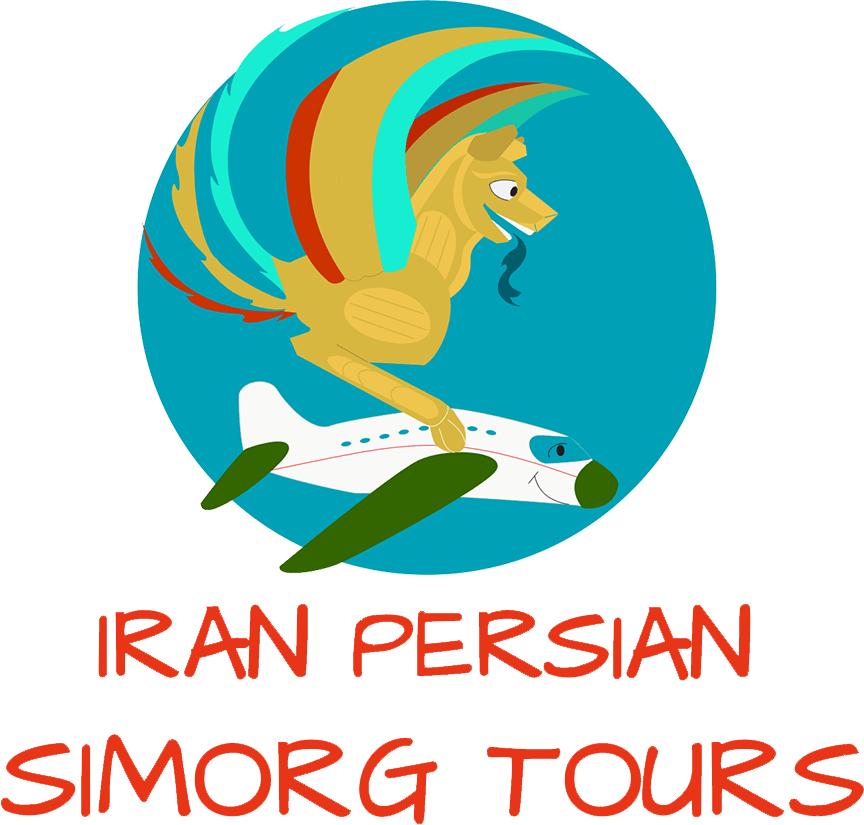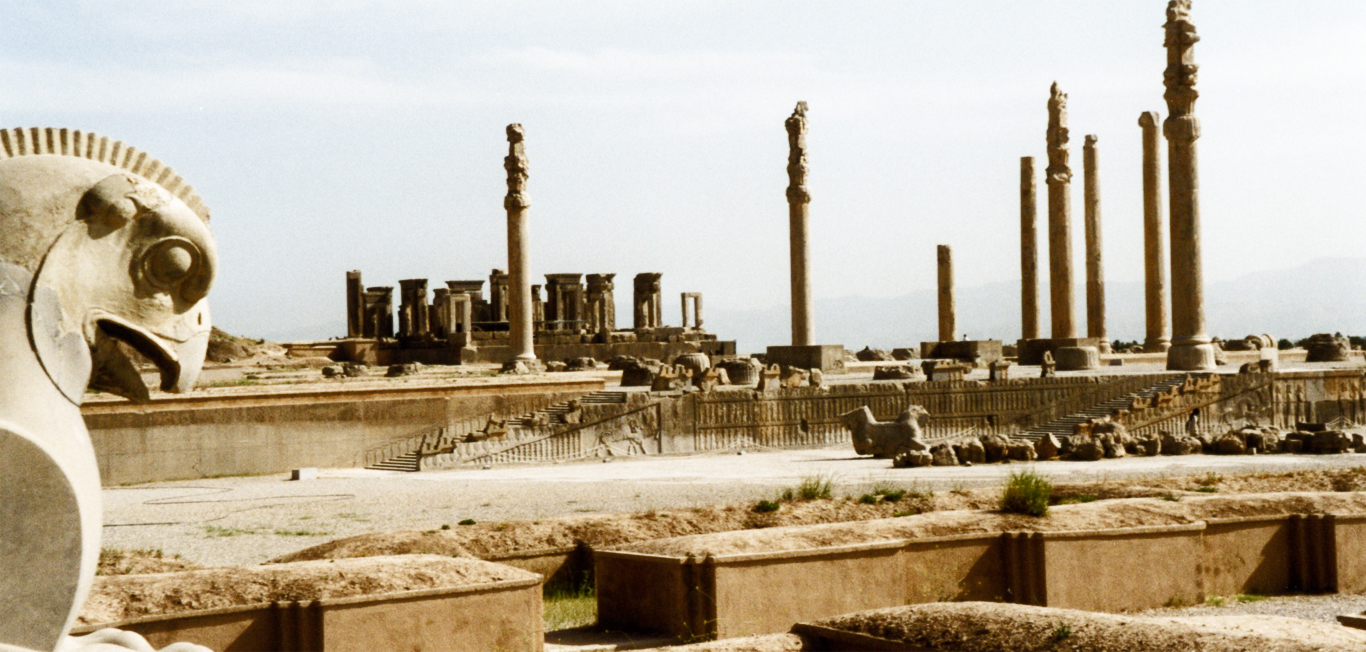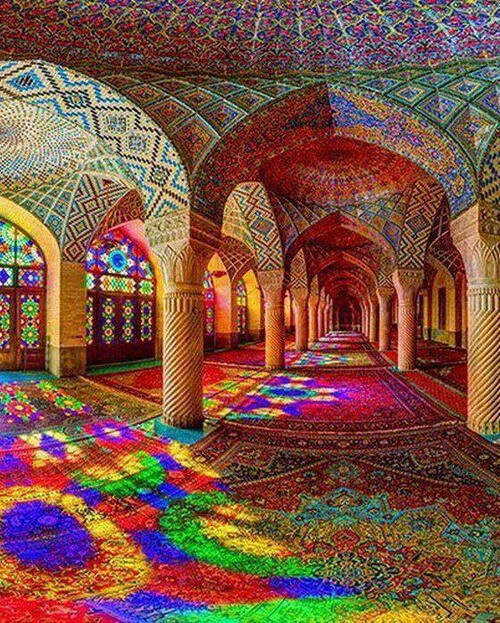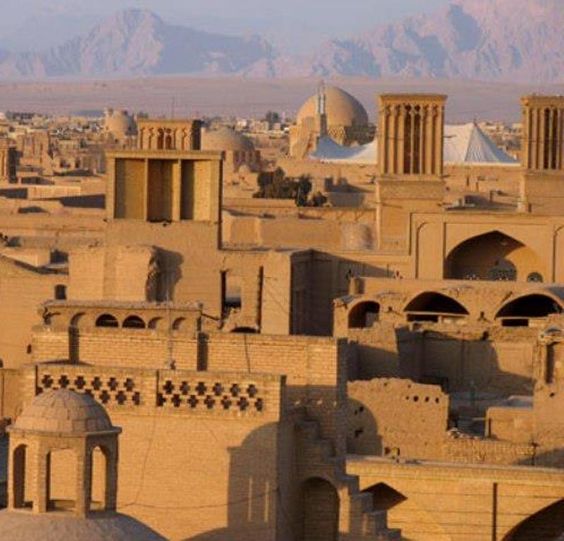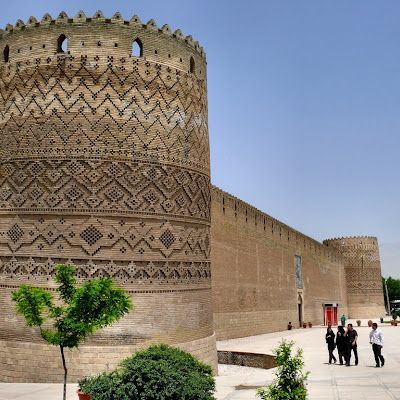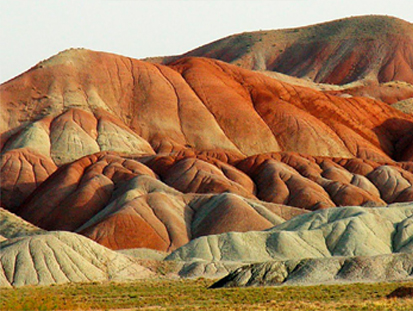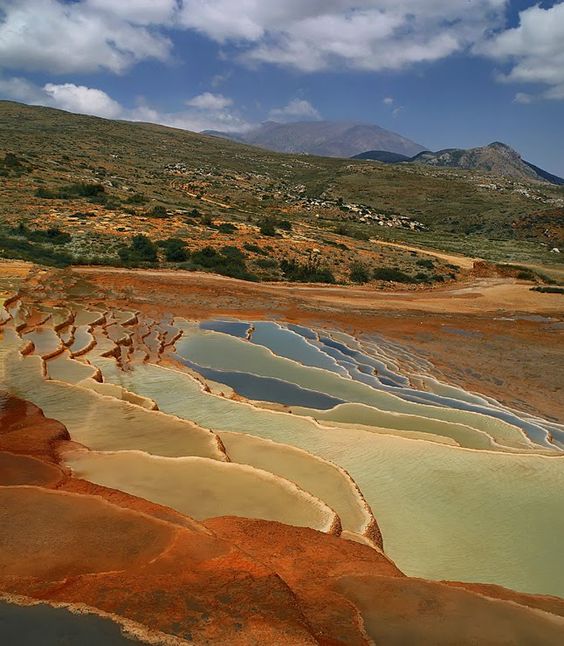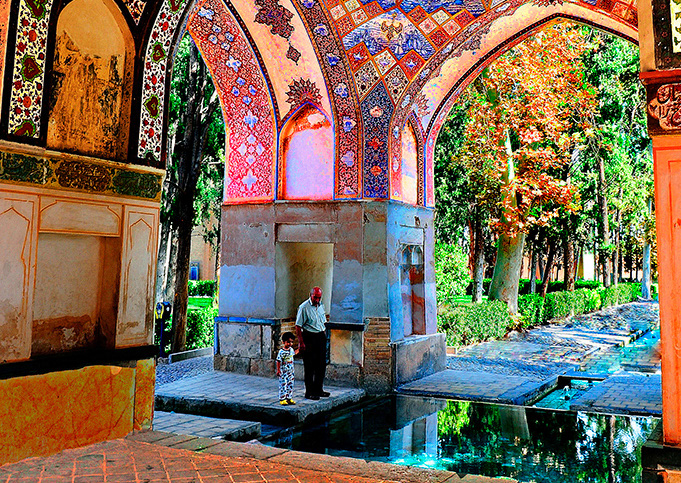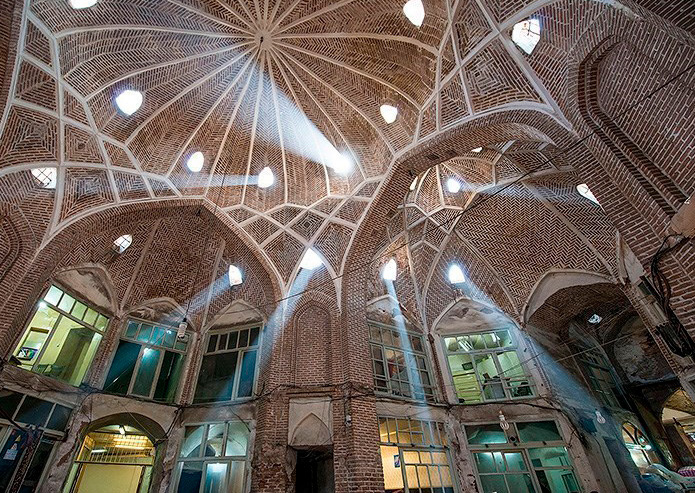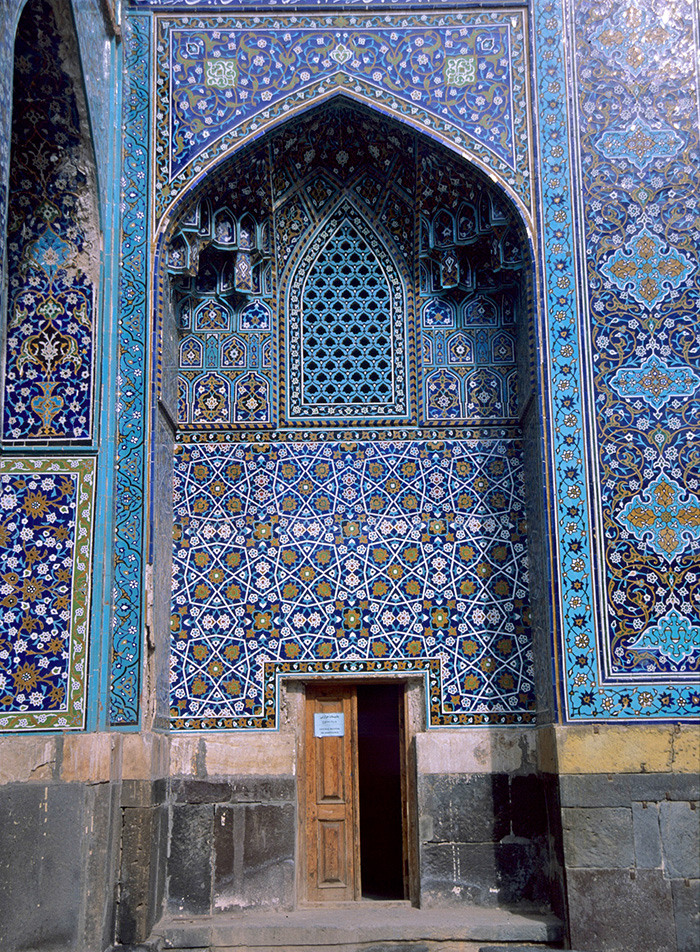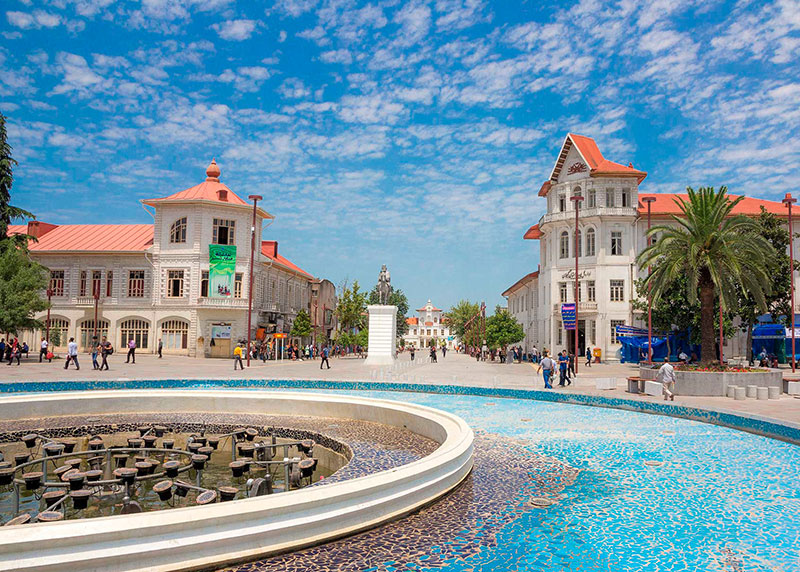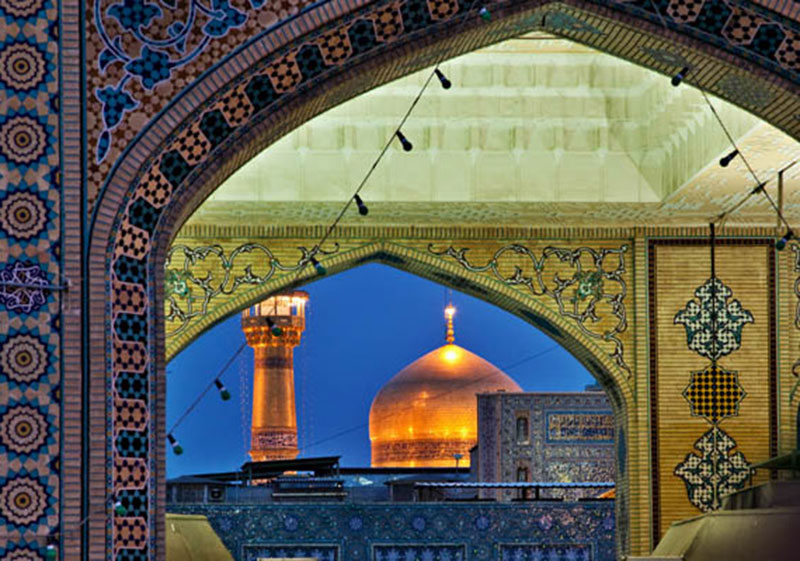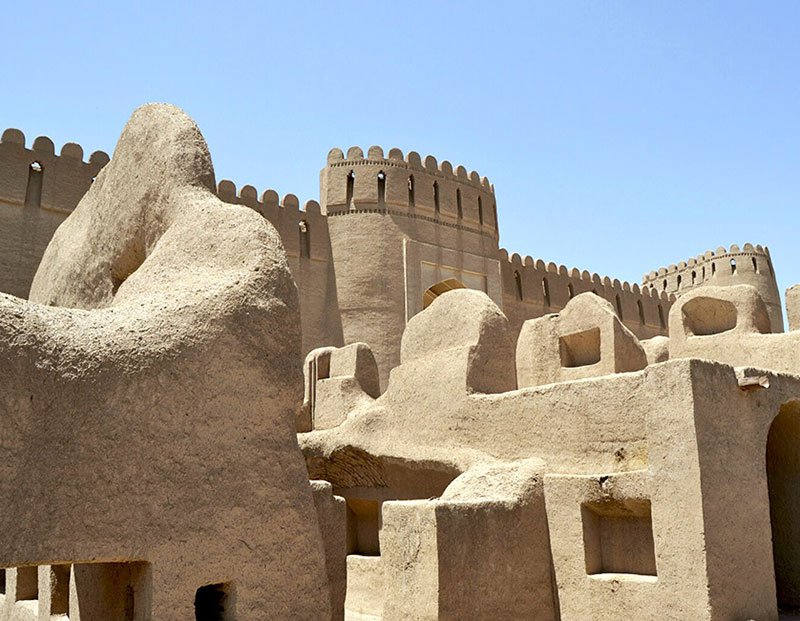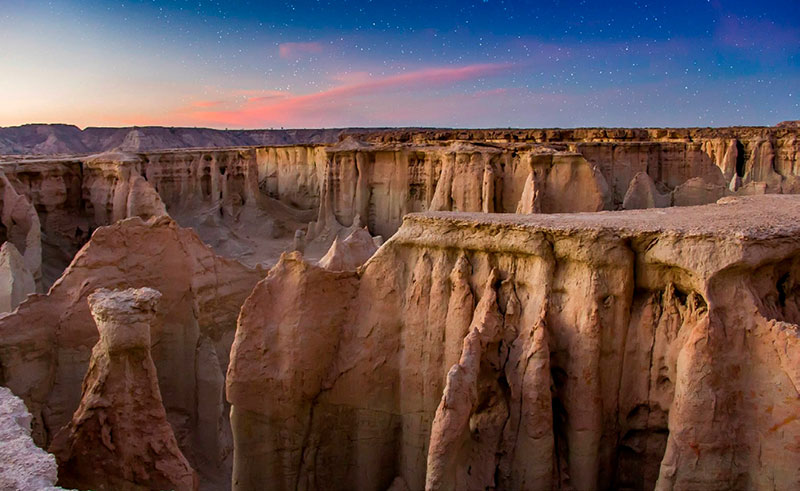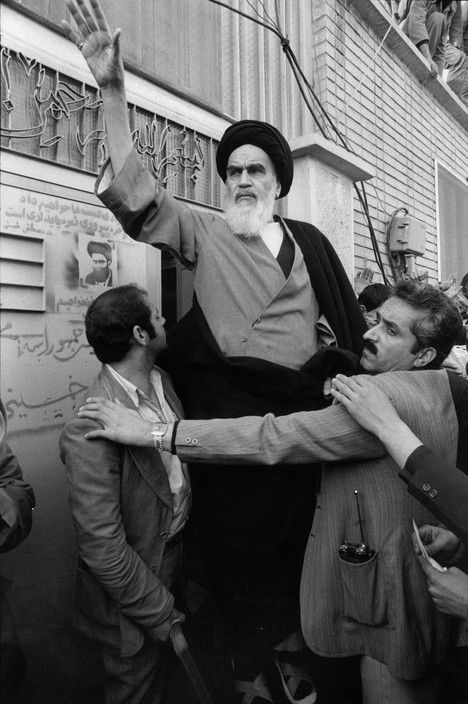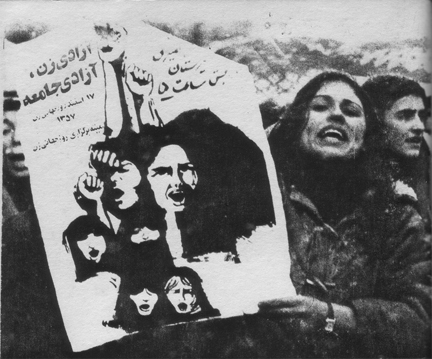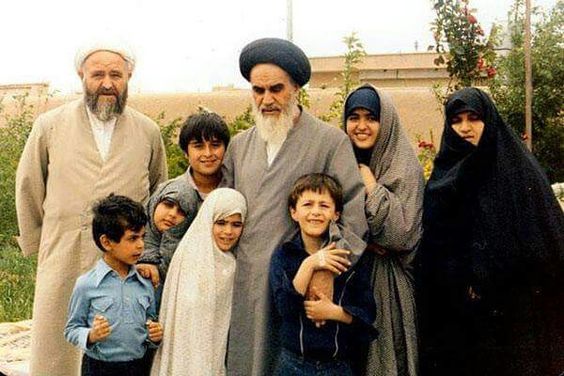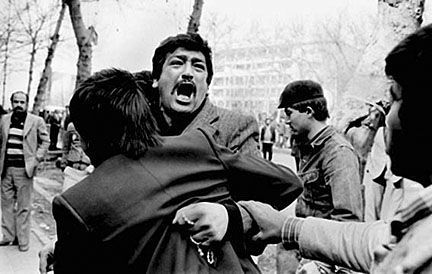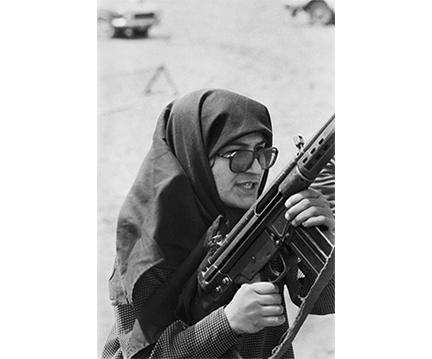Our Mission & Vision
The goal of Iran “Persian Simorg” Tours is to create small (4-8 people), curated, and experiential tours to Iran with the mission of reigniting the former passion of travelling to Iran. And contrary to popular perceptions we want to dispel the negative preconceptions, which have been developed by the mass media over the past 40 years, of Iran as a dangerous and hostile place.
With some of the friendliest and most hospitable people in the world our vision is to promote a lasting connection with the locals. We are confident that you’ll walk away with very different ideas than you may have first had about the country.
Another part of our vision is to move away from a rigid tour structure, and instead promote a more free-flowing excursion, while taking in the main attractions spanning both the pre-Islamic and Islamic civilisation all mixed in with Iran’s rich multicultural and regional diversity.
Iran Persian Simorg Tours
Experience Iran’s famously warm hospitality and be greeted by friendly locals who are genuinely interested in welcoming guests.
Explore the country’s rich culture and history as you visit UNESCO World Heritage sites, admire exquisite Iranian architecture, enjoy local cuisine and experience local Iranian culture to see for yourself why Iran has been described by Lonely Planet as “possibly the friendliest place on earth”.
Our PackagesPackages & Extension Trips
All internal transportation and airport transfers, hotel accommodation, entry site fees, and 2 daily meals. Please inquire about our inclusive airfare and visa packages.
12 Day (Mamooli) Tour
20 Day Big (Bozorg) Tour
15 Day Big (Shomalli) Tour
21 Day Combined Tour
Please talk to us today and see how we can build a suitable package for you.
Destinations
Shiraz
Shiraz was once the national capital under the Zand dynasty, and known as the city of poets and nightingales. An important cultural city from the 12th century, the city was also the heartland of Persian culture for two millennia.
Shiraz is famous for its UNESCO listed sites such as the Bagh-e Eram and the late Zand leader’s Karim Khan’s Citadel. You will also find the mausoleums of Iran’s two great historic poets- Hafez and Sa’di, and in the evenings you can gather to listen to locals recite their poetry. At night you can marvel at the spectacular mirror decorated Shah-e Cheragh Mosque, and in the morning witness the sun rays blare through the multi-coloured glass work of the Nasir al-Molk “Pink” Mosque.
Read More
Destinations
Persepolis, Nash-e Rostam and Pasagarde
As a full-day bus trip from Shiraz visit the Unesco World Heritage Site ruins of Persepolis (520 BC), the magnificent capital and once greatest empire in the world of the Achaemenid Empire. Included in the excursion also are the key historical sites of the Achaemenid and Sassanid eras, Nash-e Rostam and Pasagarde.
Read More
Destinations
Isfahan
Isfahan (half-the-world) has twice been Iran’s capital; once under the former Seljuks (1037-1194 AD) and later the Safavids (1501-1747 AD).
Its success was in large part due to its revolutionary ideology combined with a modern Shi’a political ideology that would overturn the previous state structure which was viewed by the people as one led by a religiously illegitimate Shah and was effectively inconsistent with Islamic principles. This was all undergird by a strong current from the people’s demands and goals, which included protecting and empowering national culture against foreign influence and putting a stop to the profligate waste of national resources, unchecked corruption, and economic mismanagement, which was demonstrated across Iran by the slogan: “Independence, Freedom, and Islamic Republic!”
Read More
Destinations
Yazd
Originally settled 5000 years ago, Yazd has historically been an important trading post. This desert city is also home to Iran’s largest Zoroastrian population, including a fire temple. With the appeal of a Unesco heritage-listed ancient old city quarter comprising adobe mud-brick homes and buildings with beautiful rooftops views, interconnected with criss-crossing lanes and alleyways makes this a perfect walking destination to wander, discover, or to get lost.
Its success was in large part due to its revolutionary ideology combined with a modern Shi’a political ideology that would overturn the previous state structure which was viewed by the people as one led by a religiously illegitimate Shah and was effectively inconsistent with Islamic principles.
Read More
Destinations
Kashan, Abeyaneh, Naeen, QOM.
On the main routes between the central golden cities are these oasis cities and alluring ancient villages. Important for different reasons that offer idyllic destinations and a peaceful ambience, they offer an authentic experience with a sense of continuity. These destinations are now either growing cities, like the pilgrimage city of Qom, with important histories and/or are off-the-beaten-track stop-overs on the edges of the desert (Dasht-e Kavir), and with mountainous vistas they offer visitors much to see and experience.
Its success was in large part due to its revolutionary ideology combined with a modern Shi’a political ideology that would overturn the previous state structure which was viewed by the people as one led by a religiously illegitimate Shah and was effectively inconsistent with Islamic principles.
Read More
Destinations
Tabriz
Rich in Azeri culture and situated at the main intersection of the historic Silk Road, Tabriz is the Iran’s second oldest city. During the Sassanian era it was the main trading centre of Iran and the Middle East linking northern Iran to Europe. And during Iran’s rule under Tamerlane, Tabriz became the capital of the Qara-qoyonlu dynasty, and later it was briefly made the national capital under the Safavid ruler, Shah Ismail. Its Azeri Turkish speakers have held out Persians, Ottomans, and Russians to maintain their culture and rights.
Its success was in large part due to its revolutionary ideology combined with a modern Shi’a political ideology that would overturn the previous state structure which was viewed by the people as one led by a religiously illegitimate Shah and was effectively inconsistent with Islamic principles.
Read More
Destinations
Kaleybar and Ardabil
Located in one of the most breathtaking regions of Iran, Kaleybar. The road heading west to Ardabil through the Aras River Valley follows a picturesque route of stacked villages, red eroded rocky canyons and cliffs, and mountain peaks on the Armenian side. Its main attraction is the 9th century Azeri crag-top ruin of Qal’eh (castle) Babak. En-route west from the Aras River Valley to visit Iran’s medieval churches.
Its success was in large part due to its revolutionary ideology combined with a modern Shi’a political ideology that would overturn the previous state structure which was viewed by the people as one led by a religiously illegitimate Shah and was effectively inconsistent with Islamic principles. This was all undergird by a strong current from the people’s demands and goals, which included protecting and empowering national culture against foreign influence and putting a stop to the profligate waste of national resources, unchecked corruption, and economic mismanagement, which was demonstrated across Iran by the slogan: “Independence, Freedom, and Islamic Republic!”
Read More
Destinations
Khal Khal, Zanjan, Sultaniyeh, and Qazvin.
Khal Khal passes through the incredibly scenic Qezel Owzan valley heading south from Ardabil to Zanjan. On the road to Zajan are the incredible colourful mountains extending for 20km. On the Sultaniyeh Plain by the Qazvin-Zanjan road stands Sultaniyeh Dome (Unesco-listed Gonbad-e Sultaniyeh) formerly a Persian capital built by the Ilkhanid Mongols.
Its success was in large part due to its revolutionary ideology combined with a modern Shi’a political ideology that would overturn the previous state structure which was viewed by the people as one led by a religiously illegitimate Shah and was effectively inconsistent with Islamic principles. This was all undergird by a strong current from the people’s demands and goals, which included protecting and empowering national culture against foreign influence and putting a stop to the profligate waste of national resources, unchecked corruption, and economic mismanagement, which was demonstrated across Iran by the slogan: “Independence, Freedom, and Islamic Republic!”
Read More
Destinations
Astara and Rasht
Capital of Gilan province, Rasht, is a vibrant town famous for its local cuisine and the world’s main caviar exporter, is a popular get-away destination for city dwellers. And is a staging-post for the millennium old, picture-postcard village of Masuleh and Seljuk-era fortress Qal’eh Rudkhan. At various times, Rasht was occupied by the Russians, Rasht has also experienced attacks from Tehran due to its extended periods of independence.
Its success was in large part due to its revolutionary ideology combined with a modern Shi’a political ideology that would overturn the previous state structure which was viewed by the people as one led by a religiously illegitimate Shah and was effectively inconsistent with Islamic principles. This was all undergird by a strong current from the people’s demands and goals, which included protecting and empowering national culture against foreign influence and putting a stop to the profligate waste of national resources, unchecked corruption, and economic mismanagement, which was demonstrated across Iran by the slogan: “Independence, Freedom, and Islamic Republic!”
Read More
Destinations
Mashad and Turkmensahra
Iran’s second largest city, Mashad is a vibrant and modern. The must-see attraction of Iran’s holiest city is the magnificent Imam Reza Shrine Complex. Known as Haram-e Reza, it is the burial site and tomb of Shiite Islam’s eighth Imam, Imam Reza. Attracting 20 million Muslims pilgrims per year the complex is also welcoming to non-Muslims.
Its success was in large part due to its revolutionary ideology combined with a modern Shi’a political ideology that would overturn the previous state structure which was viewed by the people as one led by a religiously illegitimate Shah and was effectively inconsistent with Islamic principles. This was all undergird by a strong current from the people’s demands and goals, which included protecting and empowering national culture against foreign influence and putting a stop to the profligate waste of national resources, unchecked corruption, and economic mismanagement, which was demonstrated across Iran by the slogan: “Independence, Freedom, and Islamic Republic!”
Read More
Destinations
Sanandaj
This modern and very hospitable capital city in the verdant, mountainous Kordestan province of Iran is a great place to learn about Kurdish history and culture. The city has a fortress from the 18th century, Qajar and Kurdish mansions and museums, and was the last Iranian Kurdish autonomous principality under the Ardalan emirs.
Its success was in large part due to its revolutionary ideology combined with a modern Shi’a political ideology that would overturn the previous state structure which was viewed by the people as one led by a religiously illegitimate Shah and was effectively inconsistent with Islamic principles. This was all undergird by a strong current from the people’s demands and goals, which included protecting and empowering national culture against foreign influence and putting a stop to the profligate waste of national resources, unchecked corruption, and economic mismanagement, which was demonstrated across Iran by the slogan: “Independence, Freedom, and Islamic Republic!”
Read More
Destinations
Howraman
Historically, Iranian Kurdestan was a place of importance and danger caught between powerful empires, therefore Kurdish society forgone villages and resorted to nomadism. Howraman (Horoomanat Valley), hemmed between mountains, was an impenetrable exception. The villages here are very unique for their lifestyle, and the houses here are stacked stone terraces. The site was added to the Unesco tentative list in 2007.
Its success was in large part due to its revolutionary ideology combined with a modern Shi’a political ideology that would overturn the previous state structure which was viewed by the people as one led by a religiously illegitimate Shah and was effectively inconsistent with Islamic principles. This was all undergird by a strong current from the people’s demands and goals, which included protecting and empowering national culture against foreign influence and putting a stop to the profligate waste of national resources, unchecked corruption, and economic mismanagement, which was demonstrated across Iran by the slogan: “Independence, Freedom, and Islamic Republic!”
Read More
Destinations
Kermanshah and Khorramabad
Kermanshah developed during the 4th century Sassanian era and was a place of strategic importance. It is from here where Taq-e Bustan and Bistoun (Unesco-listed) the extraordinary Achaemanid and Sassanid stone carvings inscribed into the base of a cliff can be visited. The carvings into niches, tableaus, and the bas-reliefs depict victorious Persian kings’ epic battles and the three lost languages.
Its success was in large part due to its revolutionary ideology combined with a modern Shi’a political ideology that would overturn the previous state structure which was viewed by the people as one led by a religiously illegitimate Shah and was effectively inconsistent with Islamic principles.
Read More
Destinations
Shush- Choqa Zanbil Ziggurat-Shushtar.
Choqa Zanbil Ziggurat is the ancient temple remains of the Elamite Gods and was built by the King of Elam, Untash in 13 BC. It is 45kms south of Shush (or Susa), a Unesco –listed archaeological site (over 6000 years old), where the ancient Apadana Palace of Darius I was built about 512 to 515 BC on the ruins of the Elamite buildings. It became the Achaemenids’ winter capital and afterwards the Sassanian capital. The Apadana Palace was destroyed and rebuilt a number of times and like Persepolis was finally destroyed by Alexander in 330 BC.
Its success was in large part due to its revolutionary ideology combined with a modern Shi’a political ideology that would overturn the previous state structure which was viewed by the people as one led by a religiously illegitimate Shah and was effectively inconsistent with Islamic principles. This was all undergird by a strong current from the people’s demands and goals, which included protecting and empowering national culture against foreign influence and putting a stop to the profligate waste of national resources, unchecked corruption, and economic mismanagement, which was demonstrated across Iran by the slogan: “Independence, Freedom, and Islamic Republic!”
Read More
Destinations
Keram, Mahan, Kaluts.
The most important city in the southeast (politically, culturally, and scientifically) was also once of great importance during the Achaemenid era, it has been referred to as “Kerman” in Greek texts too. The Jabali-ye Dome and the world famous unique big bazaar are both decorated with stucco decorations from the pre-Islamic Sassanid eras. Rayen Citadel in Rayen City is the second biggest adobe structure in the world covering an area of nearly 22,000 square meters.
Its success was in large part due to its revolutionary ideology combined with a modern Shi’a political ideology that would overturn the previous state structure which was viewed by the people as one led by a religiously illegitimate Shah and was effectively inconsistent with Islamic principles. This was all undergird by a strong current from the people’s demands and goals, which included protecting and empowering national culture against foreign influence and putting a stop to the profligate waste of national resources, unchecked corruption, and economic mismanagement, which was demonstrated across Iran by the slogan: “Independence, Freedom, and Islamic Republic!”
Read More
Destinations
Bandar Abass & Qeshm Island
Lying at the Straits of Hormoz, Qeshm Island is the largest island in the Persian Gulf and an eco-tourists dream destination. A Unesco-recognised Geopark for its significant geological formations of caves, canyons, hills, and valleys the island is also known for its beaches, mangrove forests, and abundant wildlife where you can see dolphins, turtles, migratory birds, and reptiles.
Its success was in large part due to its revolutionary ideology combined with a modern Shi’a political ideology that would overturn the previous state structure which was viewed by the people as one led by a religiously illegitimate Shah and was effectively inconsistent with Islamic principles. This was all undergird by a strong current from the people’s demands and goals, which included protecting and empowering national culture against foreign influence and putting a stop to the profligate waste of national resources, unchecked corruption, and economic mismanagement, which was demonstrated across Iran by the slogan: “Independence, Freedom, and Islamic Republic!”
Read More
Destinations
Tehran
The capital and Iran’s most liberal and secular city, is typically skimmed over in a day or two by most tour companies due to being architecturally unattractive and heavily polluted by peak-hour traffic.
We will help you spend a few days in dynamic Tehran to discover the city’s more exciting and beautiful side. Historically, the capital was the seat of both the Qajar dynasty and then the Pahlavi era, and during which the 1953 coup’de ta of Mohammad Mossadeq’ took place. It was later the staging point for the 1979 anti-Shah Pahlavi revolution.On your first night be greeted at IKA, then check into your hotel and meet for dinner. In these first few days in Tehran you will visit the must see highlights: The Qajar Golestan Palace, Grand Bazaar, Imam Khomeni Mosque, Azadi Tower, the former Shah’s Sa’Abad Complex, Treasury of National Jewels, Glass and Ceramics Museum, Malek National Library and Museum, The Holy Defence Museum, and the recently opened and
controversial U.S. Den of Spies.
Read More
Destinations
1979 Iranian Revolution
When you step into Iran you will be reminded of their revolution which took place in 1979.Witness this in murals, commemorative in public spaces and street names recognizing fallen heroes. Go inside the former U.S. embassy, left almost as it was, or see other vestiges left behind from past regimes which are open to both the public and tourists such as the Shah’s palaces or his prison turned into a museum. In fact, the capital serves as a walking museum with murals and billboards depicting a strong theme of defiance and sacrifice against superpowers. The Iranian revolution was a largely urban event, absent of external confrontation, and drawing from a broad range of social groups carried out through political confrontation.
Read More
Why Visit Iran ?
Described by Lonely Planet “…as possibly the friendliest country on earth…,” it is truly the people that make Iran shine and leave lasting impressions. Sit-down with locals over tea and local sweets with a high likelihood of making life-long friendships. And combined with a multicultural people through it’s regional diversity, it’s Iran’s people centred hospitality that is the real stand-out quality of the nation.
And this is why people can’t stop positively talking about Iran. With a wealth of culture spanning more than five thousand years that is home to over 20 Unesco Heritage-listed sites, including Islamic, Christian, Jewish, Zoroastrian, and pre-Islamic civilisation. My mission behind Iran “Persian Simorg” Tours is to highlight these unique features and show guests these much misunderstood and overlooked aspects of the country, and in the process helping you to gain a better understanding of Iran’s culture.
Why Choose Us?Gallery
Frequently Asked Questions
With all the riches Iran has to offer it has a high level of domestic tourism. In recent years international tourism has grown to record levels not seen since before the 1979 revolution.
What’s included?
- All airport transfers from and to IKA
- All internal travel- air and land
- All accommodation for the duration of each tour
- Qualified and licenced Iranian tour guide and assistant
- Entrance fees to all sites visited
- Two standard meals per day
- Lanyard with USB stick of your itinerary and other necessary information
- Travel insurance
What’s excluded?
- Additional meals
- Extra activities
Optional:
International air fares and visa fees can be organised for you, if required. Please inquire.
Is it safe to travel to Iran?
Yes, Iran treats security as a very high priority. The occurrence of crime is very low and it’s safe to carry larger than normal amounts of cash. The only fear of danger you may face are the different traffic norms faced as a pedestrian, but rest assured with some care and guidance you will adapt quickly and feel safe in a short time.Another precaution to take has to do with political demonstrations and photography. If by the rare chance there is a political demonstration please avoid participating or taking videos or photography as security officials are very sensitive to foreigners partaking in such events. Also, avoid taking photos of government offices or military and police sites.
Are there strict dress codes?
While there are some strict dress codes for both men and women, it is women who are more constrained by this. However, most report that they were not encumbered by these dress codes, and contrary to some preconceptions the rules are lax when it comes to the style of wearing a headscarf (for foreigners these codes are even less strict).
Best seasons to travel in Iran?
The most pleasant times of the year to travel are spring-time and the end of summer/early winter.
However, for tourists, it is best to avoid the time coinciding with Ramazan (Ramadan), as eating and drinking during the day are not encouraged hence meaning many food and drink businesses do not operate during the day and open only at night.
During the seasons of summer and winter when the extremes of the weather patterns may be experienced it is advisable to only avoid certain regions at these times. However, during these periods other regions offer more appealing conditions i.e. the south and the Gulf are very popular in the winter and conversely the north and the Caspian Sea area are very popular during the summer.
What is the act of ta’arof?
Ta’arof is a common practice in Iran used in the exchange of goods and services, but it is also extended to social interactions between family and particularly among friends. Think of it as a form of social glue binding interactions that govern kindness and politeness. It is part of a complex system of ritual politeness- an unwritten code- of how people should treat each other.
In practise, it can be explained as a “dance of honour,” while both parties should understand it as a friendly game. It can also be witnessed in actions regarding consideration, such as in gestures of respect including offering the company you are with at the door to go before you, or simply not showing your back to somebody or at least apologising if you can’t help it.
Happy Traveler Stories
Listen to what our Clients say
My trip to Iran was fabulous and filled with many memories which I never tire from telling people. Isfahan was one highlight of my trip, from walking into the main ancient square (Nash-e Jahan) and marveling at the stunning mosque domes at night or simply relaxing at one of its old cafes and sipping tea while watching the day-to-day life pass by right in front of you made it feel like you were caught in a time capsule.
The women in general and in particular my female tour guide surprised me. They were very assertive, confident and strong, while still very warm. This belies the assumption that the women are submissive- they can get the things you need done!
As a group we were fascinated and humored by the group dynamics in public spaces, and how these are at times traversed in a playful manner. While public traditions or celebrations are an exciting moment and a terrific opportunity to witness the communal nature of Iranians, giving you a different perspective on Iran.
Iran has so many different attractions and interests that there is something niche for just about everybody. I highly encourage anyone to visit. And to cherish my memories I had my photos turned into a hardcover photography book that I keep on my coffee table.
Kathryn
Iran was always on my travel list and once I decided to book a ticket and visit, I regret not having put it on the top! The museums, bridges, mosques & shrines were breathtakingly beautiful, and the calligraphy & mirror work inside these spaces is just stunning. The Treasury of National Jewels in Tehran is not to be missed either but check what days & times it opens. No cameras allowed inside, but the guidebook will be a reminder of the opulence of this collection.
Around the country the food and hospitality were second to none, and our hosts always went that extra mile and made sure the hotel stays were comfortable. The internal transport was also very modern and comfortable, with the local metro in Tehran one of the easiest, cleanest and safest I’ve ever been on! You need to carry all your currency with you, but provided you use commonsense and caution you will never feel unsafe.
I was surprised to hear Iranians call out their PIN codes to the cashier even amongst crowds of people around. With that, make sure you bring enough money for the stunning silk & wool rugs that are beautiful souvenirs to take home to remind you of the richness of Persian culture.
The people though are the main drawcard and were super friendly. In Mosques & squares the locals would always come up say hello & were very welcoming to their country. Several times I was moved to tears with the genuine & warm welcome from women, men & kids to Iran. I developed close ties with the locals, and I’m sure we will reconnect if we ever happen to cross paths again.
Seriously though, I can't stop recommending Iran to everyone! My parents, friends, work colleagues...anyone who will listen!
Simon
My personal story of Iran goes way back to the mid-1970s when I was travelling through Thailand and befriended two Iranians who invited me to visit them in their home country.
I visited Iran twice during this time and only recently returned in 2014 after retiring. And having remained in contact with my two dear friends we all met up again as I was their guest.
With so many adventures and experiences to tell I now see Iran as my second home with my friends there who feel like my extended family paying them a visit once per year.
As an avid gardener I became enthralled by the country’s gardens and Iranians love for them. The Unesco listed gardens are a must for me, and the simple leisure of visiting someone’s traditional home and sipping tea with them in their garden.
There are so many places in Iran to visit and explore that I continue to add to my bucket list.
Ivan
Iran! What can I say? A place of heartfelt lasting memories for me. My first trip was definitely not my last.
It’s the interactions with the different locals in each city which makes me want to go back. Amazing experiences from the major golden cities to the Caspian coastal towns all the way down to my stay on Qeshm Island.
Apart from its long history and heritage, the beautiful scenery, architecture both old and new, the delicious foods, and warmly hospitable people, my experiences left such a lasting impression that It gave me a serious motivation to write a book about my travels there.
You can say that I am deeply passionate of Iran and it’s never far from my mind! In Iran, I found the real world. It just leaves you wanting more!
Matthew
Contact Us
Our tours don’t just ‘show you the sights,’ they provide you with an opportunity to immerse yourself in Iranian culture and interact with the warmly welcoming locals.
As a point of differentiation we place an emphasis on providing you with an authentic experience of Iran.
Join our tours and see what Iran can offer you, both step back in time while experiencing the modern dynamic Iran. Our tours can also be customised if travelling privately.
For more info about our offers and to answer your questions please fill out the form.
